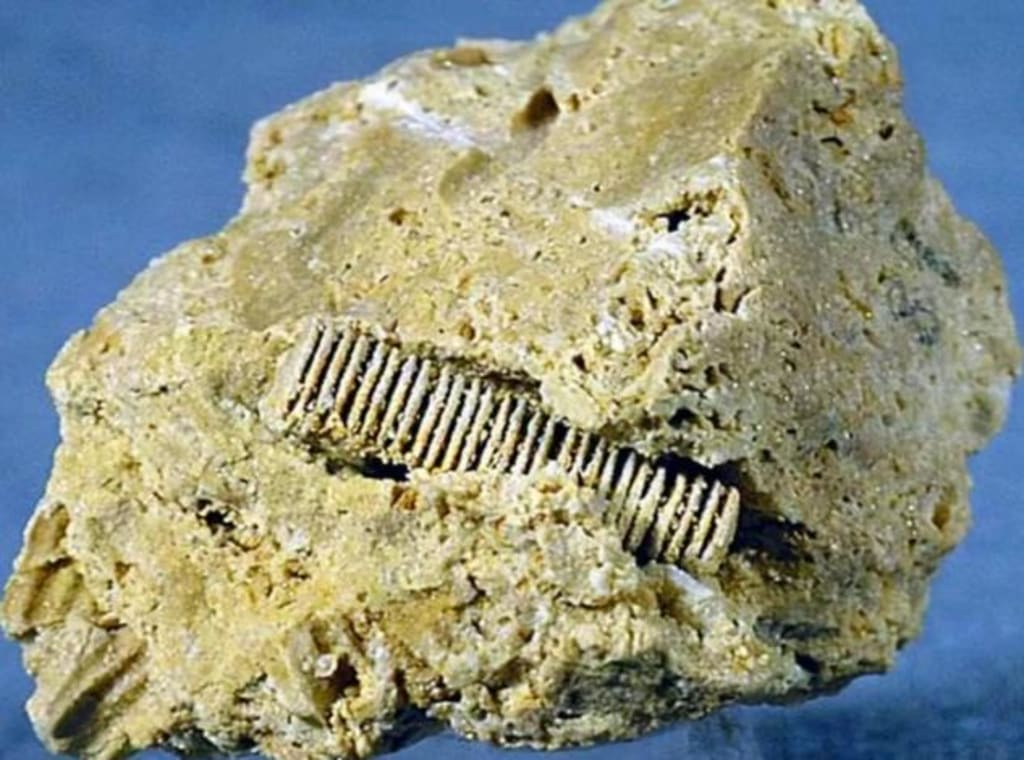A 300-million-year-old "screw"
Unveiling a prehistoric pinnacle era

It has been three million years since humans were born on earth. With the continuous evolution and development of human beings, we have gradually become the dominant force on earth.
But behind the developed civilization, humans are an extremely lonely group. We are the only advanced animal on the earth and the only civilization knowable in the universe. Such a conclusion makes us marvel at the greatness and greatness of human beings on the one hand, and makes us actively explore the existence of other civilizations on the other.
Extraterrestrial and prehistoric civilizations
Under such a psychological influence, the direction of human exploration of civilization is one outward and one forward. The outward direction is manifested by the existence of extraterrestrial civilizations, and the forward direction is manifested by prehistoric civilizations.
Whether there are extraterrestrial civilizations in the universe is highly likely in human speculation. Even if there is only one life-giving Earth in the entire galaxy, there are still 100 billion galaxies in the universe, and even if the conditions for their birth are so demanding, then there may be 100 billion "Earths" in the entire universe.
Based on such macro-technology and the little-known content of the universe, many people believe that there are aliens not only in the universe but also near and inside the Earth. The famous Roswell incident and the high level of discussion on Area 51 are both speculations and affirmations of the existence of aliens.
Likewise, prehistoric civilizations are a hot topic compared to extraterrestrial civilizations. Much of our interest in prehistoric civilizations comes from Plato's reference to Atlantis.
In Plato's mouth, Atlantis was a highly developed civilization with an ancient pantheon of gods, an extremely advanced urban civilization, and, of course, most notably, its energy system. At that time, they used the sun as an energy source, and the resulting energy can also make people rejuvenate.
It is a pity that such a civilization suddenly sank to the bottom of the sea more than 12,000 years ago.
Humans like to focus their attention on UFOs to find traces of aliens, and on the deep sea and various fossils with artificial traces or ancient relics to find the footprints of prehistoric civilizations. This is not, Russia found 300 million years old "screws", and set off a wave of the search for civilization.
The "screw" embedded in the stone
About thirty years ago, a group of people who like meteorites in the Russian city of Kaluga found a strange stone, this stone inlaid with a "screw".
The screw is a product of modern civilization, why can be embedded in the meteorite? Are there other human-like creatures existing in the universe or on top of ancient Earth?
To find out the reason, the discoverer submitted the meteorite to the astronomical agency. But after the discovery, it was discovered that the meteorite was the product of a crater explosion. A series of things that refreshed people's knowledge appeared in front of scientists, and they could only hold down their emotions to continue their research.
But disappointingly, the "screw" in the meteorite was not the product of an extraterrestrial civilization nor a relic of a prehistoric civilization. First, it was formed on Earth, and second, it was formed 300 million years ago. In geologic time, 300 million years ago is already a speculative age, so both speculations are not refuted.
Sea lilies and the Carboniferous period
The "screw" is a sea lily from the Carboniferous period.
Sea lilies
Despite their name, sea lilies are extremely old echinoderms that first appeared in the Cambrian period and have been on Earth for hundreds of millions of years. They have been on the planet for hundreds of millions of years, and their most prosperous time was during the Carboniferous period.
Sea lilies have their rhizomes and corollas, and above the corollas, there are wrist feet, so they are plant-like animals. They like to cover large areas of the sea floor, and therefore have left many fossils that look like screws.
However, after two biological extinctions in the Permian and Triassic periods, such an animal was greatly damaged, leaving behind more than 5,000 species of fossils, but today there are only 600 species of sea lilies.
Although the sea lily has retired from the stage of history after a long period, it has opened up a prehistoric peak era: the Carboniferous period.
The Carboniferous Period was mentioned earlier as a period of great prosperity for sea lilies, but in fact, the entire Carboniferous Period was also a prehistoric pinnacle.
A fossilized sea lily stem
Carboniferous period
The Carboniferous period was between about 31.6 million years ago and 286 million years ago. This period was a period of coal gathering, warm and humid in the northern palaeo-continent. As a result, the life of this period also appeared to be extraordinarily prosperous.
In addition to a large number of sea lilies, brachiopods were still present and cephalopods were able to develop rapidly. At the same time, vertebrates were gradually derived and began to get rid of their dependence on water, such as the forest lizards that appeared in Pennsylvania. In addition, the undead was also born at this time.
After that, terrestrial vertebrates flourished and amphibians became the dominant species on Earth ...... Thus, it is clear that the Carboniferous period was a time of great biological content and variety in the history of the Earth.
In addition, the Carboniferous period was characterized by one more feature: its size. Whether it was plants, animals, or insects, they were also very large. At this time the birth of dragonflies, open wings can be about 70 cm, the root of trees up to 40 cm in diameter, and arthropods like Malus can be three meters long, for this reason, the Carboniferous period also has an alias "giant insect era".
The reason why the creatures of this period were so huge was that the earth's oxygen content was extremely high, about 45%. Because of this, all the creatures on Earth became huge.
However, such a prosperous moment also ushered in the moment of destruction. The burning of coal and planetary collisions with the Earth made the lushly planted Earth usher in a big fire, and the toxic gases caused by the burning and planetary collisions became a threat to every life that existed. The sea lily discovered in Russia was killed when the planet hit the Earth and appeared in front of mankind as a meteorite that looked like a screw.
The Sea Lily is not an alien or prehistoric civilization, but a testimony to the Carboniferous Period, the pinnacle of prehistory, more than 300 million years ago. Although the evolution of the Earth has been billions of years, many Earth organisms have long since disappeared between several biological extinctions. But Sojourn Earth has left some traces that allow us to speculate on the Earth's past.
About the Creator
Karen Gillanah
The aggravation that can be told is not aggravation; the lover that can be snatched away is not a lover.






Comments
There are no comments for this story
Be the first to respond and start the conversation.